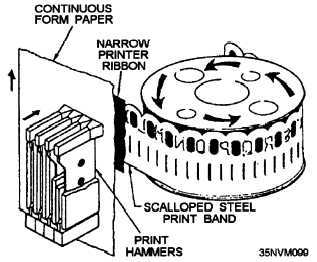Figure 12-7.—Band, paper, ribbon, and hammer relationship
in a typical band printer.
changing the size of the fonts is not possible because
each column printed must have its own print hammer.
Band and chain printer characters are generally printed
at 10 characters per inch (cpi), although a few printers
have been manufactured to print 12 cpi.
Chain and band printers are medium- and
high-speed printers. They print over 300 lines per
minute.
CHARACTER PRINTERS
Character printers print one character at a time.
Most character printers are impact-type printers. The
notable exception to this is the ink jet printer, which
sprays ink on the paper to print characters. The
common impact character printers are the dot matrix
and the daisy wheel printers.
Dot Matrix Printers
A dot matrix printer forms characters by printing a
series of small dots. The heart of the dot matrix printer
is the print head. The print head contains a series of
print wires, small pins that strike the page to create
characters and graphics. The quality of print from a dot
matrix printer is directly related to the number of print
wires in the print head. The most common print heads
use 9 or 24 print wires. Figure 12-8 illustrates the
nine-pin print head.
Figure 12-8.—A single column, nine-pin print head.
The print wires in the print head are independently
driven by individual solenoids. A pulse applied to the
selected solenoid forces the print wire into the ribbon
and the paper. The print wire is returned to its normal
position by a spring that holds it in the print head. The
firing of the print wires can occur over 300 times per
second.
The print wire solenoid driver pulse generates
heat. The print head is usually mounted on a heat
sink because of the speed at which the print head
operates. The heat sink uses ambient air to disperse
heat that, if left unchecked, would damage the print
wires.
The quality of print generated by dot matrix printers
has improved greatly over time. Older printers
contained only seven print wires and the dots were
clearly visible. Because of this, dot matrix printers were
often used for only draft work and the final document
was reprinted on a daisy wheel-type printer or manually
typed. Today, many dot matrix printers have a print
mode refereed to as near letter quality (NLQ). Letter
quality refers to the quality of print typically generated
by a typewriter. Near letter quality print has become
acceptable for all but the most formal of
communications.
A dot matrix printer using the nine-pin print head
shown in figure 12-8, will initially print a character in
the draft mode. The paper is then advanced one-half
dot space and the character is printed again. This will
fill in the space between the dots and the characters will
appear smoother.
A 24-pin print head prints near letter quality faster
because it has two vertical columns of print wires. The
print wires in column two are slightly offset from
12-9



